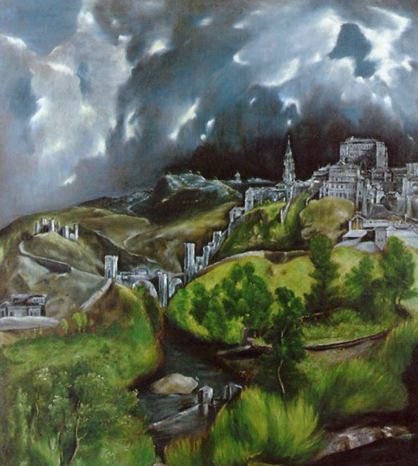TOLEDO is thunderstruck. Gun-metal clouds writhe in a blustery, leaden sky. Below, the Cathedral and the Alcazar, huddled alliance of church and state, cling precariously to their hilltop perch. Lit by an other-worldly, spectral glare, the buildings look like ghosts of buildings, hallucinatory architecture shivering greyly in the electric atmosphere.
El Greco's great View of Toledo, currently on loan from the Metropolitan Museum of Art in New York to the National Gallery of Scotland, is in Edinburgh to make a point. According to David Davies, curator of 'Mystery and Illumination', it is a prime example of El Greco's learnedness, both a response to Giorgione's famous La Tempesta and an example of Renaissance 'ekphrasis', or the depiction of subjects that had been treated in the great lost paintings of classical antiquity. It is said to prove that El Greco must have read Pliny on the storm paintings of Apelles.
El Greco might be demonstrating his eagerness to rival the greats of past and present, but there's more to it than that. In his picture, strangely, the city does not seem under threat but on the brink of sanctification, awaiting its apotheosis. A hole has opened up in the tempestuous sky, suggesting Toledo's imminent assumption, its metamorphosis into the Heavenly City itself. Learned references might be there but, as usual in El Greco, high spirituality wins out.
It suits Davies to play up El Greco's erudition, since 'Mystery and Illumination' is a show consecrated to beetle- browed exposition, the elucidation of iconographical complexity. It is a combination of celebration and detective work, celebrating the SNG's recent acquisition of El Greco's mysterious Allegory - a boy, in deep shadow, lights a candle under the watchful gaze of a monkey and a toothy yokel - and puzzling over the fact that, until...


